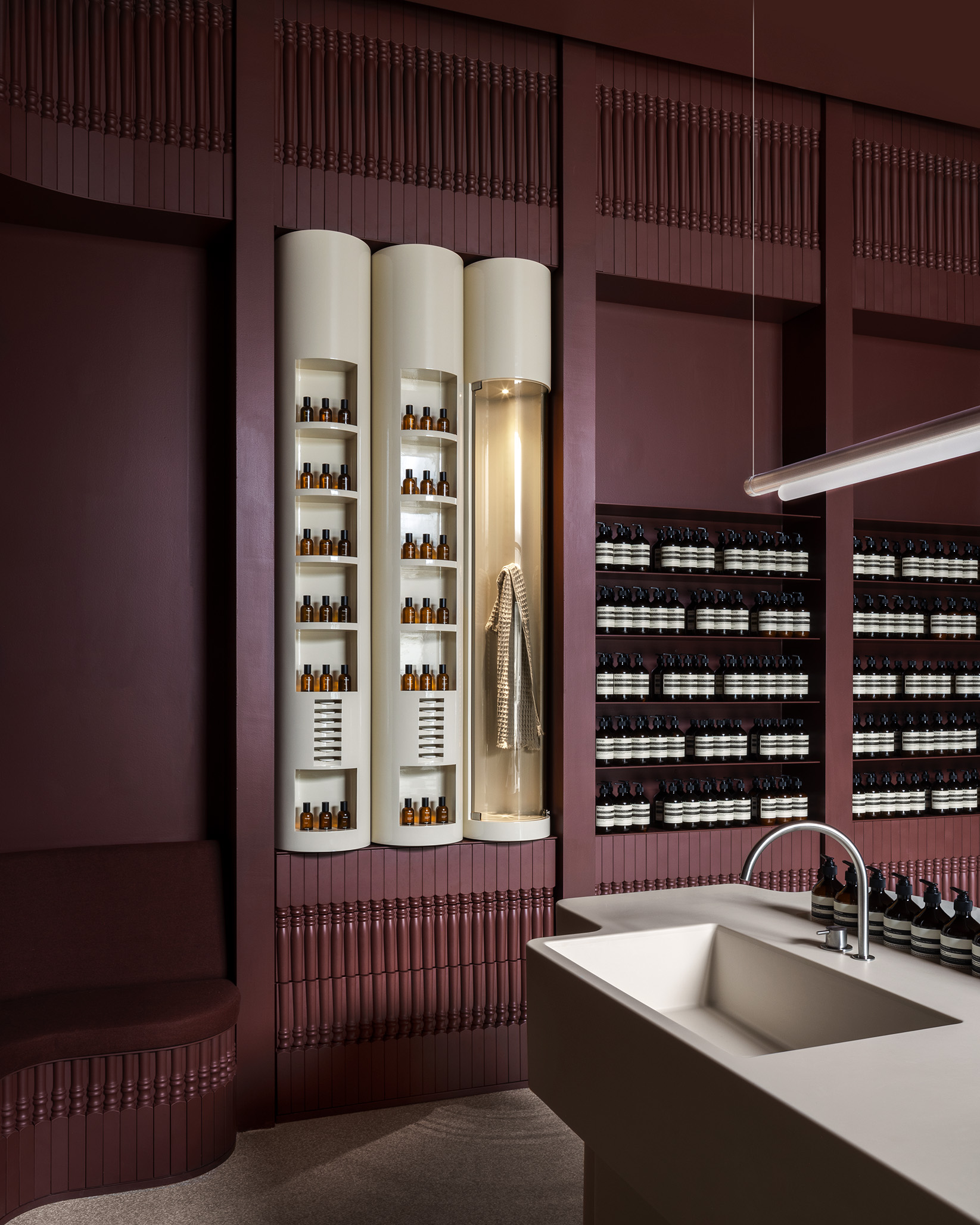Toronto, Canada’s largest city, still carries scars from the brutal battles over planning and preservation in the 1960s and ’70s. Aesop’s third store in the city, designed by Toronto-based studio Odami, confronts this legacy and responds with symbolic usage of the city’s social and material history.
Located in Yorkville, a neighborhood known for its upscale retail and incessant parading of exotic cars, the recently completed skincare store nods to the long-lost countercultural forces that shaped its streets.
“Inspiration for the design came from the recently demolished 1969 York Square project by Diamond and Myers,” Michael Fohring, Odami’s cofounder, told AN Interior. “By adapting existing Victorian structures to a denser, differently programmed scheme, it showed us a good example of how Yorkville was going against the grain and mediating between scales and histories.”

The store layout replicates Yorkville’s block patterns of variously sized and textured parks, squares, and lanes at a smaller scale. Coated in burgundy paint, the interior’s edges thicken and swell to create smaller enclaves within: A tea station, fragrance library, and infusion chamber punctuate rhythms of hard and soft surfaces, evoking the dark, warm atmosphere of a Victorian parlor.
Repurposed maple balusters—built to a former building code and now too short for their intended use—pattern the undulating perimeter. “We came across a large unused stock of balusters sitting in a woodturner’s warehouse, and we saw an opportunity to repurpose these in the design,” Aránzazu González Bernardo, Odami’s other cofounder, said. “This was a clear reference to the city’s history.” Circulation in the remaining open space flows around a large Corian basin.

For Fohring and González Bernardo, the decision about how to anchor the design came from an understanding that Toronto’s seemingly sterile history is very much alive, if you dig a little bit. González Bernardo said, “There is this assumption in North American cities that everything is new and that designers don’t engage any histories because there are none to be engaged.”
